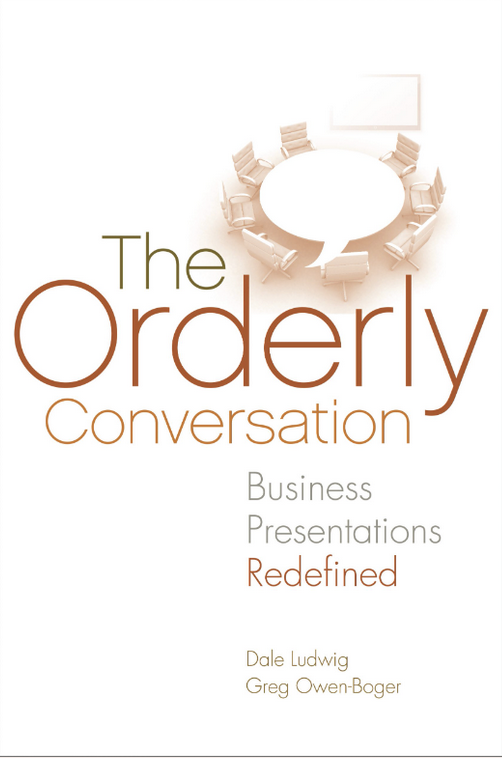
- Dale Ludwig Leadership
Restraint is One of the Fifteen Facets of Executive Presence
This article is one in a series focusing on Executive Presence and how leaders can meet their potential through improved communication. Executive Presence is defined by Suzanne Bates in her book “All the Leader You Can Be: The Science of Achieving Extraordinary Executive Presence” as “The qualities of a leader that engage, inspire, align, and move people to act… By understanding how your intentions as a leader match up with perceptions, you can learn how to flex your style to gain trust, build alignment, lead change, inspire performance, and drive executional excellence.”
This article focuses on Restraint, one of the 15 facets that make up a 3-dimensional leader.
Click here to gain a greater understanding of (a) executive presence in general and (b) the other facets that make up a well-rounded leader.
What is Restraint?
Bates describes Restraint, one of the fifteen facets of executive presence, as “displaying a calm disposition, characterized by reasonableness and by avoidance of emotional extremes or impulsiveness.” People with a high level of Restraint are able to control their emotions when situations are challenging. They are calm, thoughtful, and deliberate.
How Restraint Makes People Feel
Someone who demonstrates a healthy level of Restraint builds trust and allegiance in others. Their calm demeanor is reassuring. Their ability to keep emotions in check gives them a steady hand. The feelings these actions generate in others are
- I feel I can turn to you when big challenges arise. You are a calming voice.
- I trust that your emotions will not cloud your thinking.
- When you facilitate meetings, I trust you to keep the conversation focused and efficient.
Not Enough Restraint
When someone lacks Restraint, they may appear volatile and impatient. They may
- Have outbursts
- Make decisions based on knee-jerk reactions
- Not be able to stop talking when they should
- Let the tensions of a difficult conversation get the best of them
Specific Behaviors to Improve Perceptions of Restraint
Here are some behaviors and techniques you can use to improve how others perceive your Restraint.
- Pause and think before speaking
- Stay focused on the issue at hand, not the emotions around it
- Avoid showing frustration when things don’t go your way
- Be patient with others, letting them have their say
- Acknowledge others’ emotions, without comment or judgment
- Avoid sending texts or emails when angry or upset
Too Much Restraint
When someone exhibits too much of a particular facet, it can become an overstrength. An overstrength often results in negative perceptions. Here are some downsides of an overstrength in Restraint.
- Others are confused about your motives
- Being described as having a cold exterior, a poker face, or being difficult to read
- People don’t know where they stand with you, or feel they are getting the silent treatment
- Because others are unsure of your perspective, they make negative assumptions about you
A Story About Too Little Restraint
Justin had a reputation as a hothead. Restraint was definitely not one of his strengths. He would get angry during meetings, go off on a tirade with team members when they didn’t fully agree with him, and generally make the work that needed to be done less pleasant and effective.
His teammates learned to tiptoe around Justin, enabling his behavior rather than confronting him about it. In time, this led to a larger-than-usual outburst from Justin. Here’s what happened. Justin was working on a project team with a few of his peers. On a Thursday afternoon, the day before a big project milestone, the team leader got an email from management. The work they had done so far on their project had to be redone. Some of the data they had used in their analysis had to be thrown out, and the parameters of the project had shifted.
Justin was traveling that day, planning to meet with a client the following day. The manager called the rest of the team together, told them about the changes, and then asked them not to distract Justin with this new development.
One of the other team members agreed and added, “This is best for all of us. He will be upset and just make matters worse.” The team agreed and worked together on Friday to finish the project without Justin.
The next week, when he heard what had happened, Justin went into one of his angry diatribes. His manager pulled him aside and said, “Justin, this, what’s happening right now, is why we didn’t tell you. You have a pattern of emotional outbursts. We knew that you would be upset, and your reaction would cause trouble and slow things down.”
This comment had a big effect on Justin. He had always assumed his outbursts were the result of his passion for the work he did. He suddenly realized that what he thought of as passion was actually chewing through a great deal of goodwill with his colleagues.
Some Facets Ride Together
Often, when we lean into particular facets (or pull back from them), other facets “come along for the ride.” Justin’s inability to regulate his emotions in these low-stakes situations was having a negative impact on other facets, including Demeanor and Intentionality. By exercising more Restraint, he’ll show improvement in how others feel about him in these areas.
It should be pointed out that Composure, another facet in the model, is similar to Restraint. The difference is that the lack of Composure is triggered during times of crisis. While these two facets do not always ride together, they’re easy to confuse.
Final Thoughts About Restraint
Restraint is in the Character dimension of the Bates model, which means that it is an aspect of our personalities developed early in life. Because it is a personality trait that seems to be built in from the very beginning, we sometimes don’t even think about it until someone points out that we’re particularly good at or lacking in it. This is why growing your self-awareness as you continue on your leadership journey is so important.
If you’d like to learn more or explore executive presence coaching options for yourself or your team, click here to schedule a call.

